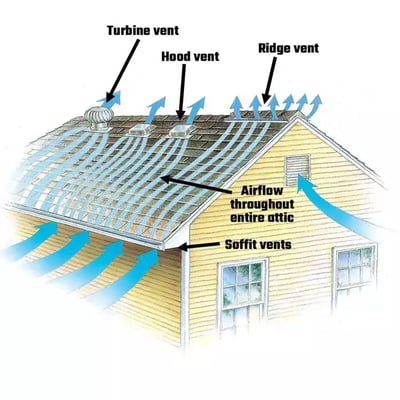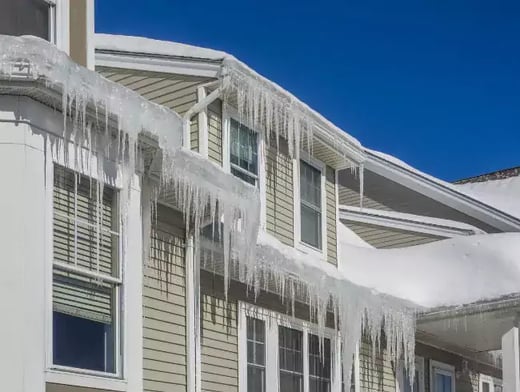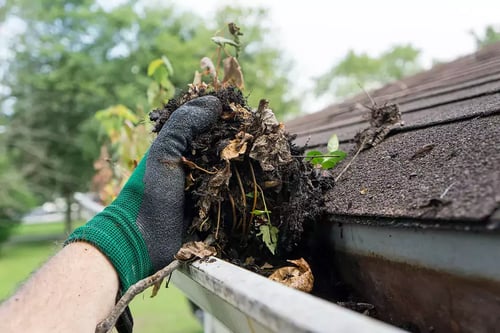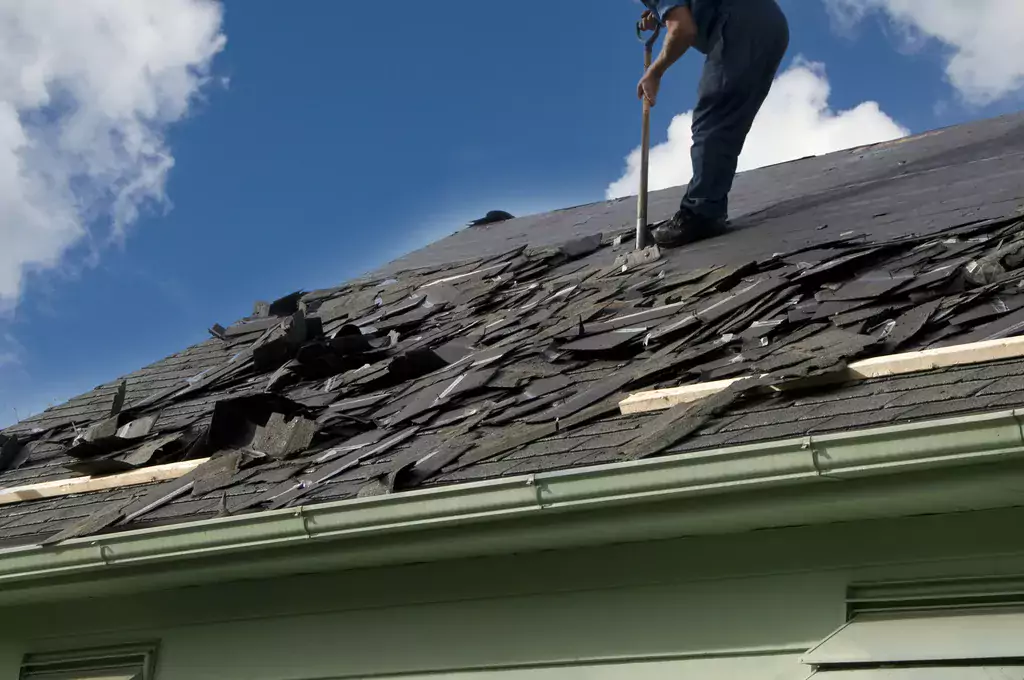3 Signs Your Asphalt Roof Needs a Replacement
Is your asphalt roof looking a little worse for wear? It might be time for a roof replacement.
A new asphalt roof is a major investment. Like any investment, you want it to last. But how can you get the most life out of your new asphalt roof?
In our 30+ years of experience, this is one of the most common questions we’ve heard from our customers. Our goal at On Tops Roofing has always been to provide homeowners with honest and reliable information (along with some of the best roofs in the business). That’s why we created this list of ways you can maximize your roof's lifespan.
We know the value of having a safe, high-quality roof over your head. So, let’s go over five different ways you can extend the life of your new asphalt roof.
The average lifespan of an asphalt shingle roof is 15-30 years. However, that lifespan can be drastically shortened to as little as two years if your attic isn’t properly ventilated.
As the uppermost part of your home, your attic is sandwiched between indoor and outdoor temperatures. When these elements clash, condensation and heat are bound to follow.

Without proper attic ventilation, heat and moisture will accumulate in your attic with nowhere to go. The damage caused by this buildup could cause leaks and other issues that could shorten your roof’s life.
For example, poor ventilation in the summer can cause heat to build up in your attic. This can deteriorate the adhesive in the roof decking and cause your asphalt shingles to crack, curl, or blister.
You can ensure proper attic ventilation by having soffit vents installed near the lower part of your attic and ridge vents near the upper part of your attic. This will regulate the flow of cool air into the attic and push hot air out.
Proper attic insulation is also vital for the health of your asphalt roof. For example, homeowners who live in colder climates are at risk for ice dam formation if their homes aren’t well insulated.
If your attic isn’t insulated, heat from your home will escape through your ceiling and into your attic. This will melt any snow on your roof and cause the resulting water to run down your eaves until it reaches the unheated bottom edge or soffit area of your roof. Once this melted water refreezes, it becomes an ice dam.

The water that builds up behind an ice dam can cause shingle deterioration, decking decay, and water leaks in your attic and exterior walls. This damage to your asphalt roof can be avoided by making sure your attic is properly insulated.
You can determine if you need more insulation by just taking a look at your attic. If your insulation is level with or below the spaces between your attic floorboards, you probably need more.
To counter the effect of ice dams, a contractor can install ice and water shields on vulnerable areas of your roof.
Roof maintenance and inspections are like an oil change for your car. While there’s likely no major damage, oil changes help to keep your car in good shape and running smoothly. Just like an oil change, you shouldn’t neglect developing a regular maintenance routine for your asphalt roof.
Roof maintenance is the periodical checking of all the vulnerable areas on your roof that could be susceptible to damage. It is critical to preventing roof problems and keeping your roof in good condition for years to come.
Because maintenance is so vital to preserving your healthy roof, it should be done each spring, fall, and after any major storm.
But how “regular” is a regular maintenance routine? Is roof maintenance something you can do on your own? Honestly, a good routine includes both biannual maintenance and biyearly professional inspections. Let’s take a look at what both look like to help you develop your schedule:
Your gutter system manages the flow of rainwater off the roof and away from your home. If they’re blocked with leaves, debris, or other matter, water won’t drain properly.
However, it's not just your gutters that can suffer damage when clogged. Overflowing water can damage your shingles and the overall structural integrity of your roof. This is particularly true if you have asphalt shingles.

Heavy storms can cause water to overflow out of clogged gutters and then pool at the edge of your roof. If not taken care of, this exposure to water can cause asphalt shingles to curl or buckle. When these shingles are compromised, water can seep underneath and damage the roof’s decking, allowing moisture into the attic that can create interior damage on your ceilings.
Hiring a top-notch roofing contractor is crucial to maximizing the life of your asphalt roof.
The best way to ensure you’re hiring a high-quality contractor is to check their manufacturer certifications. Certified contractors have gone through years of training and upheld a consistent record of quality workmanship and proper material installation to earn the recommendation and trust of top roofing manufacturers like GAF, CertainTeed, and Owens Corning.
Certified roofers will provide warranties on both labor and materials because they stand behind their workmanship and history of proper installation. This gives you peace of mind that your new asphalt roof will be protected no matter what happens after their work is complete.
Typically, contractor workmanship warranties are for one year or more. However, longer warranties are not necessarily more valuable than shorter ones. The length of the warranty is less important than the intent and ability of the roofer to stand behind it.
Here’s a breakdown of some of the warranties offered by most certified contractors:
While standard manufacturer warranties typically cover labor costs for installation, they usually don’t cover workmanship charges to remove and dispose of failed shingles. For that, you would have to upgrade to an enhanced manufacturer’s warranty. While these vary based on the manufacturer, they often cover the full replacement value as well as workmanship for a period of time.
Now that you know five ways to extend the life of your asphalt replacement, you should feel confident in your ability to get the most life out of your new roof. While these tips should keep your roof happy and healthy for years to come, there may come a time you’ll need professional help to keep your roof safe.
For example, if you just went through a major storm, have patches of missing shingles, or notice water stains on your ceiling, it’s probably time to call your contractor. It’s important to hire a contractor that works close to your home so you can make sure they get there in a timely manner if you have a roofing emergency. Learn more benefits of working with a local contractor here.
If you live in Raleigh or the surrounding areas and need a local roofer, consider us! We are certified by CertainTeed and hold the title of GAF Master Elite Roofers. On top of our roofing services, we also offer skylight installations, window replacements, and gutter repairs. Don't hesitate to fill out the form below if you want a free inspection, estimate, or to ask us questions about your asphalt roof.

Is your asphalt roof looking a little worse for wear? It might be time for a roof replacement.
_WebP.webp)
From the ground, all you really see up on the roof are shingles that cover it, maybe some pipes or vents, and perhaps the gutters. However, as with...

If you’ve started your roof replacement process, you’ve probably been curious about how much the actual cost of replacing your roof would be.